Southwest Michigan field crops update – July 10, 2025
Tar spot was confirmed in Cass County. With corn starting to tassel, scout for tar spot and western bean cutworm. Wheat reached physiological maturity, and harvest began.

Weather
Temperatures remained fairly constant over the past week with highs in the 80s. Scattered showers provided small amounts of precipitation until yesterday, July 9, when parts of southwest Michigan received over 1 inch of rain. Other parts of southwest Michigan did not receive any precipitation over the past week and have been drier than normal all season and are running a deficit of about 5 inches.
Scattered showers throughout the upcoming week will bring potential rainfall this weekend and again in the middle of next week. Temperatures will increase slightly, and potential evapotranspiration will be above normal.
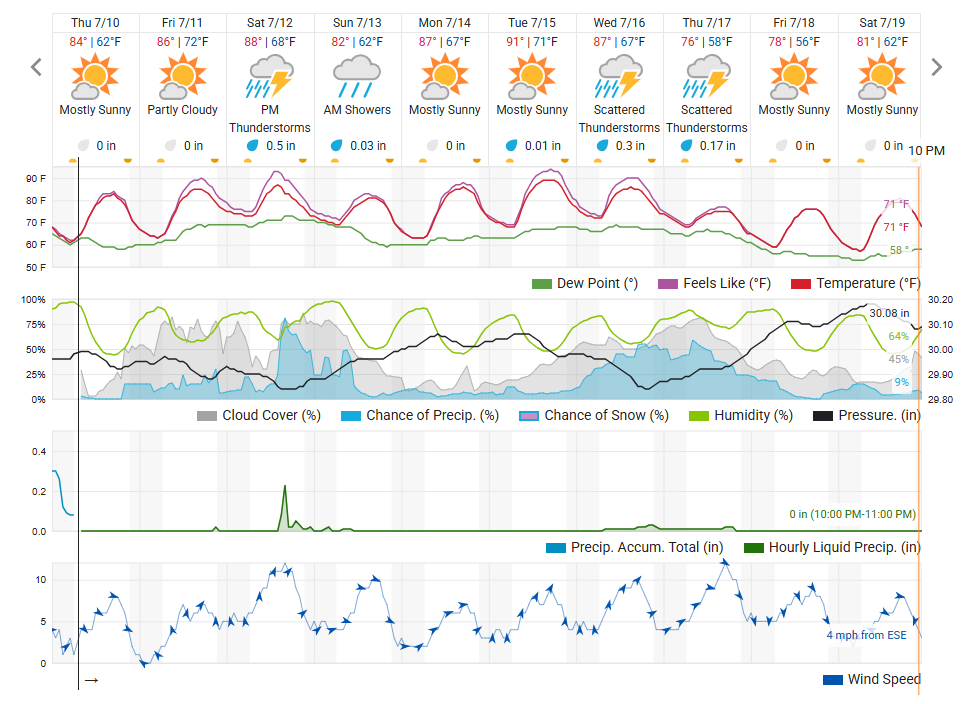
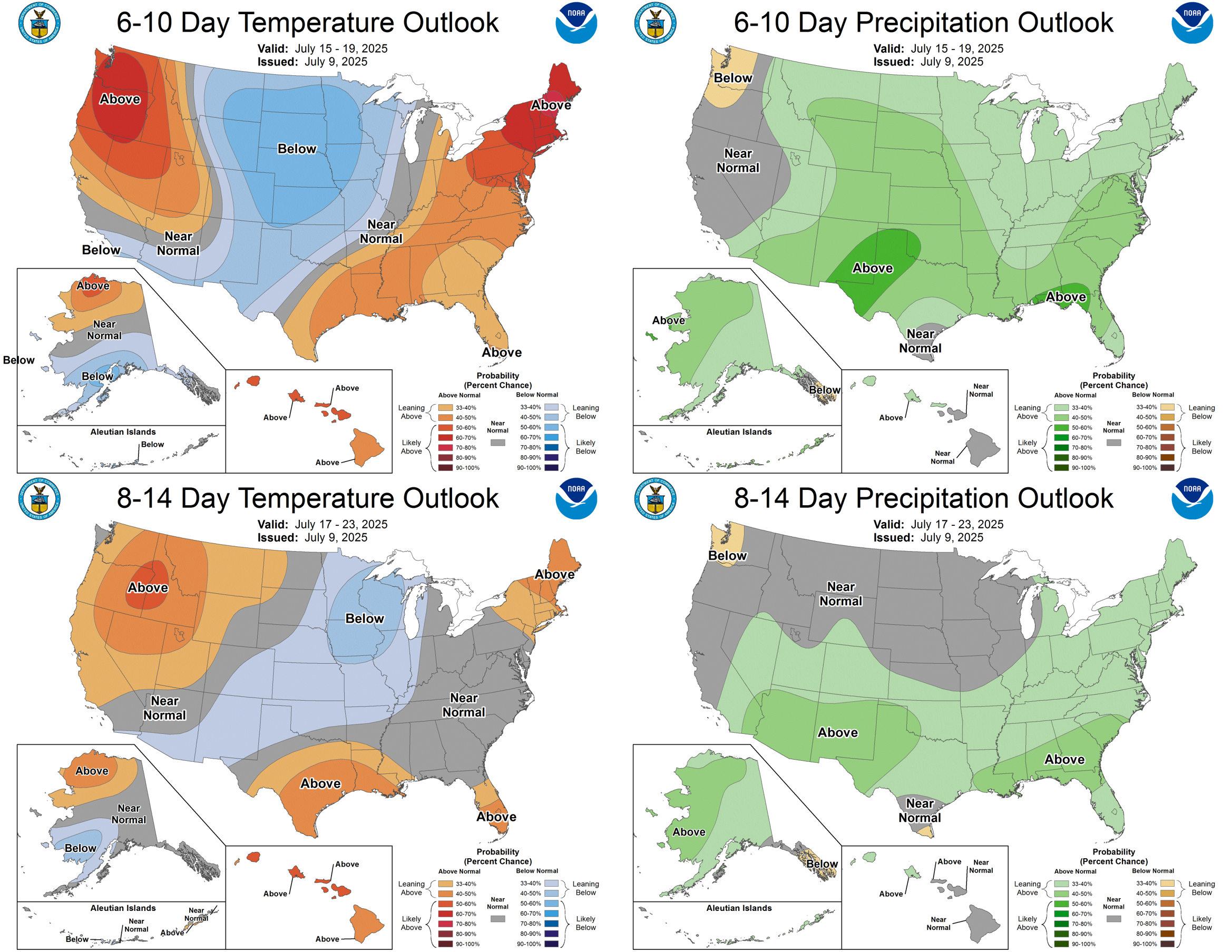
Crops and pests
Soybeans are in late vegetative stages and early reproductive stages. A plant with one flower anywhere on the stem is at R1, and if the plant has at least one open flower in the top two nodes, it is at R2. R3 starts when a pod in one of the upper four nodes is 3/16 inches long, and some soybeans in southwest Michigan have already hit R3. Fungicides to prevent white mold should be applied between R1 and R3, with data showing higher efficacy when applied closer to R1. Risk models show a low white mold risk for the next several days.
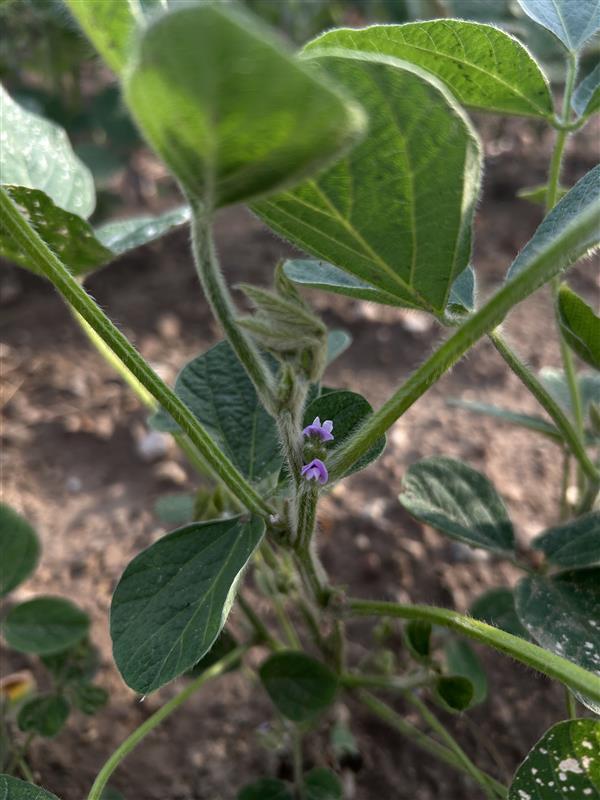
Corn started to put out tassels in some fields this week, and detasseling has started on select seed corn fields. Most corn is in late vegetative stages. Tar spot was confirmed in Cass and Eaton counties yesterday, July 9. As tar spot is found closer and closer to home, remember that the best timing for a single fungicide application is between VT and R3-4. Risk models show a low tar spot risk for the next several days.
As tasseling approaches, western bean cutworm moths will be searching for plants close to tasseling or freshly tasseled. Scout for egg masses in the upper two thirds of the canopy by walking with the sun backlighting the plants. Egg masses will appear as dark shadows on the leaves.
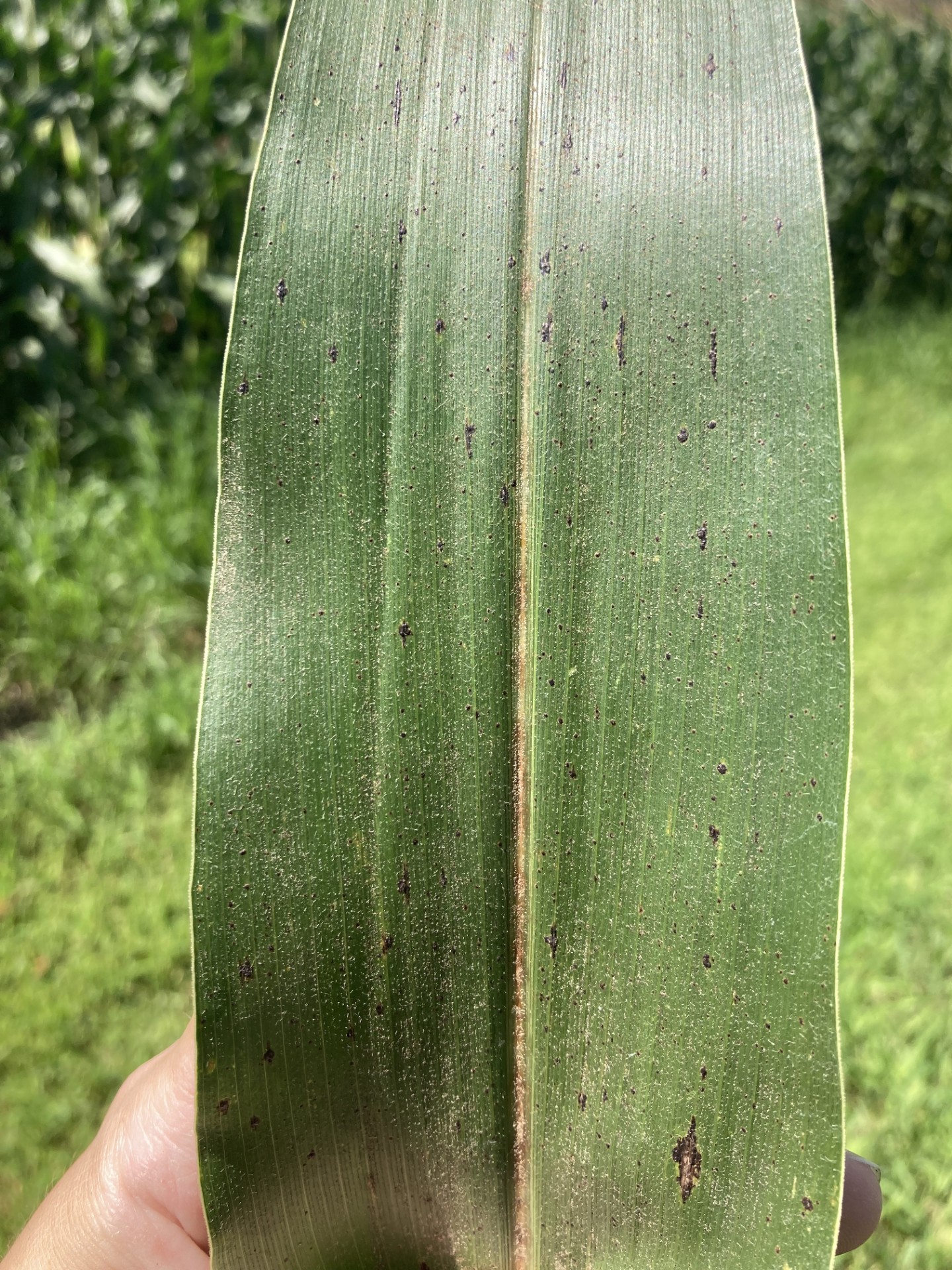
Most winter wheat is at Feekes 11.3 (physiological maturity), when the kernel is hard and cannot be easily divided with a thumbnail, to 11.4, when the kernel has dried down sufficiently for harvest. Wheat harvest started this past week. Materials like the article “Considering double-crop soybeans after a winter cereal this year?,” the Midwest Cover Crops Council’s cover crop recipe for planting after wheat going into corn or soybean and the fact sheet “Cover crop tolerance to winter wheat herbicides” can help guide decisions on what to plant after wheat.
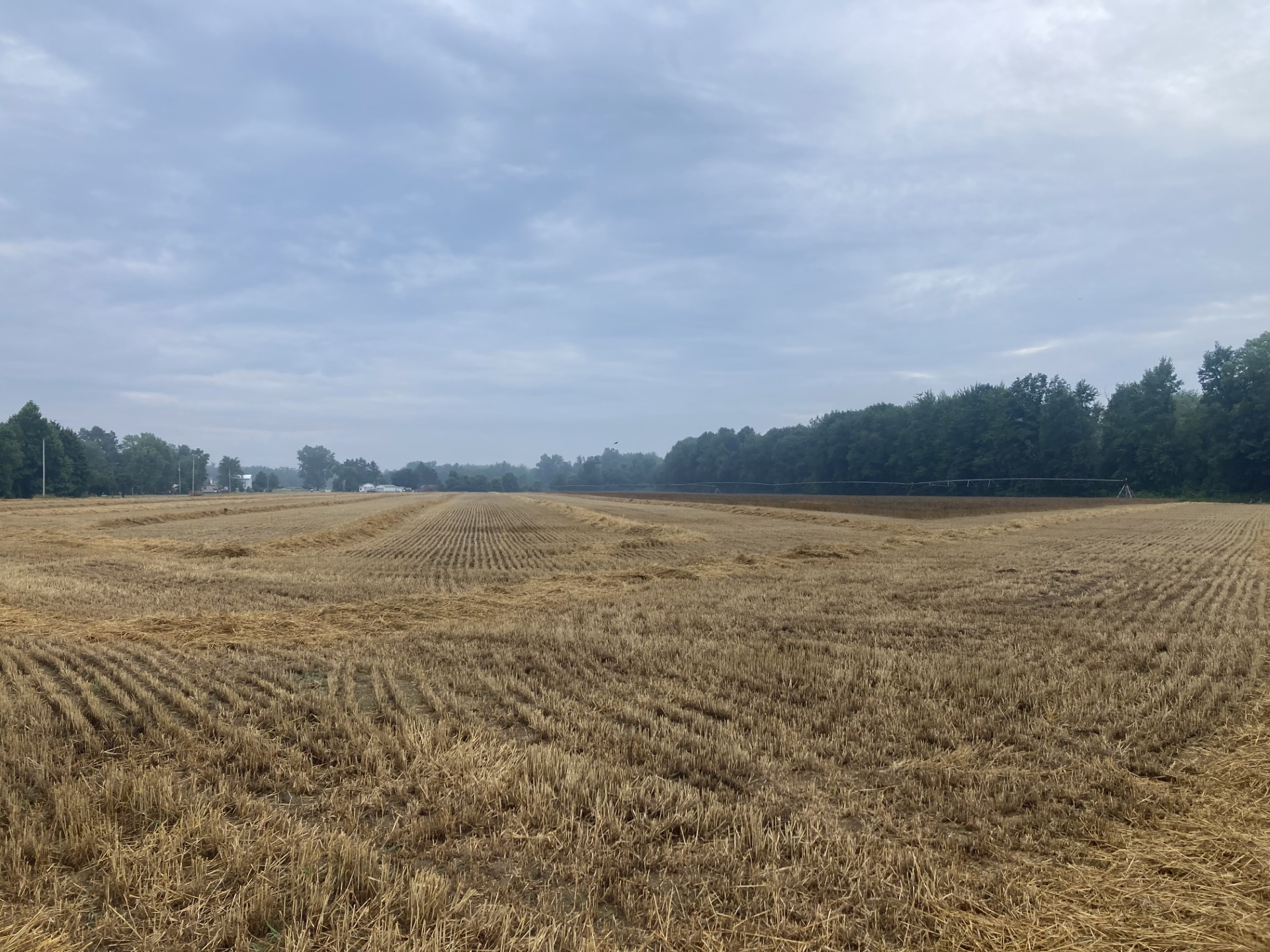
Potatoes continue to be at risk of vine rot with the hot weather and lush canopies. Scout regularly for late blight, colonizing aphids and second-generation Colorado potato beetle this time of year. Late blight risks have been low to medium in southwest Michigan so far. Scout for aphids by checking the undersides of leaves in a recommended 20-25 plants in 10 areas per field. Refer to the fact sheet Managing Colonizing Aphids in Ware Potatoes for pictures of colonizing aphids that affect potatoes, a list of chemical options for managing aphids and tips for chemical control.
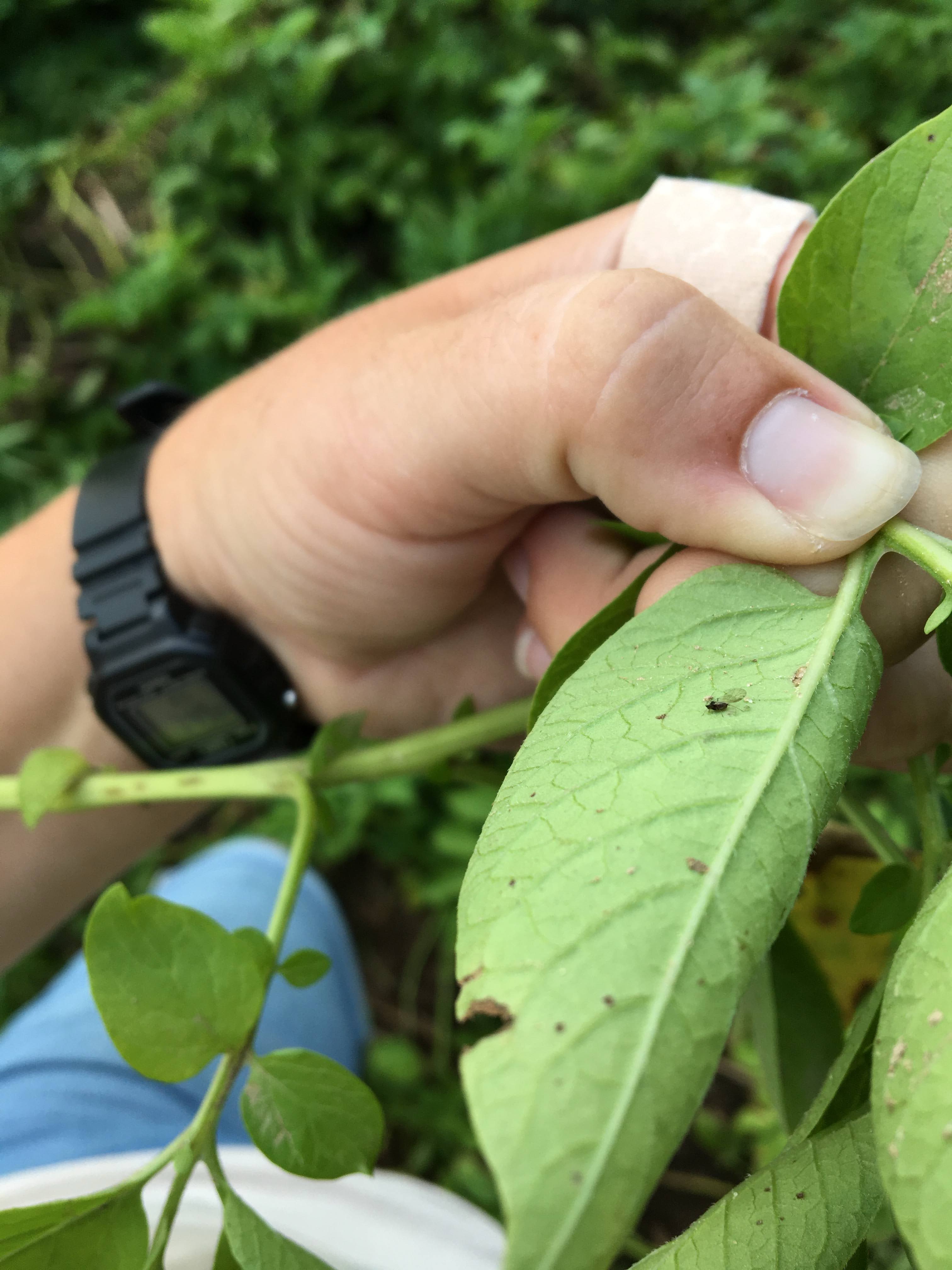
Alfalfa and forages are at variable stages of development, with some cutting occurring this past week, while other fields are approaching cutting and others are solidly in stages of regrowth.
Weekly water use
Corn at the VT (tasseling) stage has shown a significant increase in water use. Crop water demand peaks during the early reproductive stages, particularly during tasseling, silking and pollination; periods when the crop is most sensitive to water stress. During these stages, irrigation may be necessary, as water use often exceeds precipitation. This week, corn is using approximately 0.20 inches of water per day, therefore maintaining adequate soil moisture to support yield potential is highly important.
Soybeans in the early reproductive stages are currently using approximately 1.40 inches of water per week. The most critical growth stages for water availability are R3–R6. During these stages, soybeans are highly sensitive to water stress. Failing to meet water needs during this period can lead to fewer seeds per pod, smaller seed size, and ultimately lower yield potential.
Wheat at maturity has significantly reduced water use, and irrigation is no longer required. If you plan to plant a second crop after wheat, it is crucial to ensure there is sufficient soil moisture to support quick germination and uniform emergence, which are key to successful stand establishment.
When scouting your fields, keep an eye out for visual signs of water stress. In soybeans, stressed plants may rotate their leaves, exposing the silver-gray, fuzzy underside to sunlight. This is a survival mechanism to reflect light and reduce water loss, but it signals severe stress and potential yield reduction. In corn, leaf rolling is a natural response to heat and limited moisture, helping lower transpiration and canopy temperature. While some rolling can occur on hot days, even with adequate moisture, persistent rolling into the early evening or mid-morning is a clear indicator of moisture stress. Irrigation Scheduling Tools can help estimate crop water needs and decide timing and application.
Estimated weekly crop water use for field crops in Michigan (inches perweek) for the week of July 7 - 13
|
Crop |
Growth stage |
Constantine |
Entrican |
Hart |
|
|
Reference ET |
1.28 |
1.25 |
1.29 |
|
Corn |
V8 |
0.72 |
0.70 |
0.72 |
|
V10 |
0.98 |
0.95 |
0.98 |
|
|
V12 |
1.28 |
1.25 |
1.29 |
|
|
V14, V16, VT (Tasseling) |
1.41 |
1.38 |
1.42 |
|
|
Soybeans |
V3 3rd Node |
0.77 |
0.75 |
0.78 |
|
R1 Beginning Bloom |
1.28 |
1.25 |
1.29 |
|
|
R2 Full bloom |
1.41 |
1.38 |
1.42 |
|
|
R3 Begin pod/ Full pod |
1.41 |
1.38 |
1.42 |
|
|
Wheat |
Soft Dough |
1.28 |
1.25 |
1.29 |
|
Ripening |
0.64 |
0.63 |
0.65 |
|
|
Mature |
0.13 |
0.13 |
0.13 |
The table above presents estimated crop water use for various field crops across three locations in Michigan. This data helps irrigation management decisions by showcasing potential crop evapotranspiration, calculated based on reference evapotranspiration and crop coefficients for each crop growth stage. It is crucial to note that crop water use values vary across regions due to differences in weather conditions, growth stages, agronomic practices and soil properties.
When using these values for irrigation scheduling, be mindful that they assume all applied irrigation water will be utilized by the plants without any loss. Additionally, these values do not account for any precipitation that may occur during the week of calculation.
Reference evapotranspiration data was obtained from Michigan State University Enviroweather, which also offers a model for determining potential crop evapotranspiration. To access this tool, visit Enviroweather, click on "Crops," select your crop and use the potential evapotranspiration tool by choosing your nearest weather station, the latest date of interest and other crop information.
Field Crops Virtual Breakfast Series
.jpg?language_id=1)
Hot topics, presented by various MSU Extension specialists, was the topic for the MSU Extension Field Crops Virtual Breakfast this week. Discussion centered on corn plant growth, tar spot, western bean cutworm, armyworm, flooding and more.
Recordings of this and all the Virtual Breakfast meetings are closed-captioned and available at the Field Crops Virtual Breakfast webpage and the MSU Extension Field Crops Team social media platforms: Facebook, Spotify, YouTube, Apple Podcasts and Twitter/X.
This work is supported by the Crop Protection and Pest Management Program [grant no 2024-70006-43569] from the USDA National Institute of Food and Agriculture. Any opinions, findings, conclusions, or recommendations expressed in this publication are those of the author(s) and do not necessarily reflect the view of the U.S. Department of Agriculture.



 Print
Print Email
Email